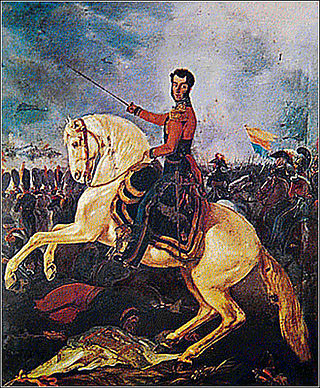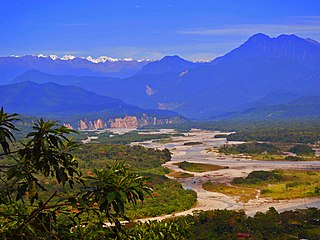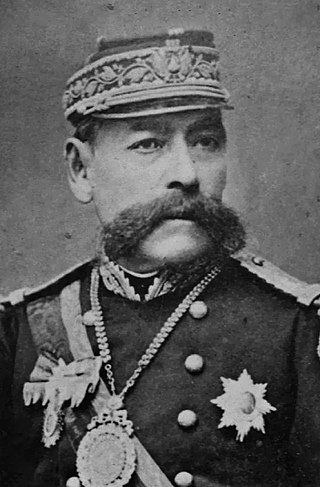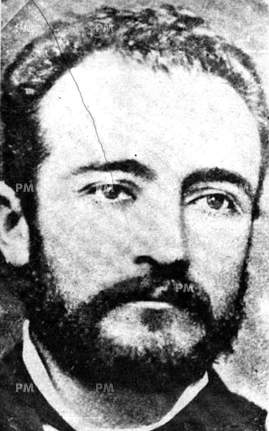
Bolivia, officially the Plurinational State of Bolivia, is a landlocked country located in western-central South America. It is bordered by Brazil to the north and east, Paraguay to the southeast, Argentina to the south, Chile to the southwest, and Peru to the west. The seat of government and administrative capital is La Paz, which contains the executive, legislative, and electoral branches of government, while the constitutional capital is Sucre, the seat of the judiciary. The largest city and principal industrial center is Santa Cruz de la Sierra, located on the Llanos Orientales, a mostly flat region in the east of the country.

The politics of Bolivia takes place in a framework of a presidential representative democratic republic, whereby the president is head of state, head of government and head of a diverse multi-party system. Executive power is exercised by the government. Legislative power is vested in both the government and the two chambers of parliament. Both the Judiciary and the electoral branch are independent of the executive and the legislature. After the 2014 Bolivian general election, 53.1% of the seats in national parliament were held by women, a higher proportion of women than that of the population.

The Bolivian War of Independence began with the establishment of government juntas in Sucre and La Paz, after the Chuquisaca Revolution and La Paz revolution. These Juntas were defeated shortly after, and the cities fell again under Spanish control. The May Revolution of 1810 ousted the viceroy in Buenos Aires, which established its own junta. Buenos Aires sent three large military expeditions to Upper Peru, headed by Juan José Castelli, Manuel Belgrano and José Rondeau, but the royalists ultimately prevailed over each one. However, the conflict grew into a guerrilla war, the War of the Republiquetas, preventing the royalists from strengthening their presence. After Simón Bolívar and Antonio José de Sucre defeated the royalists in northern South America, Sucre led a campaign that was to defeat the royalists in Charcas for good when the last royalist general, Pedro Antonio Olañeta, suffered death and defeat at the hands of his own defected forces at the Battle of Tumusla. Bolivian independence was proclaimed on 6 August 1825.

Cochabamba, from Quechua qucha or qhucha, meaning "lake", pampa meaning "plain", is one of the nine departments of Bolivia. It is known to be the "granary" of the country because of its variety of agricultural products from its geographical position. It has an area of 55,631 km2. Its population in the 2012 census was 1,758,143. Its capital is the city of Cochabamba, known as the "City of Eternal Spring" and "The Garden City" because of its spring-like temperatures all year.

Manuel Mariano Melgarejo Valencia was a Bolivian military officer and politician who served as the fifteenth president of Bolivia from December 28, 1864, until his fall on January 15, 1871.

Ismael Montes Gamboa was a Bolivian general and political figure who served as the 26th president of Bolivia twice nonconsecutively from 1904 to 1909 and from 1913 to 1917. During his first term, the Treaty of Peace and Friendship with Chile was signed on 20 October 1904.

The Viceroyalty of the Río de la Plata meaning "River of the Silver", also called "Viceroyalty of the River Plate" in some scholarly writings, in southern South America, was the last to be organized and also the shortest-lived of the Viceroyalties of the Spanish Empire in the Americas. The name "Provincias del Río de la Plata" was formally adopted in 1810 during the Cortes of Cádiz to designate the Viceroyalty of the Río de la Plata.

Aniceto Arce Ruiz de Mendoza was a Bolivian lawyer and politician who served as the 22nd president of Bolivia from 1888 to 1892. He also served as the fourth vice president of Bolivia from 1880 to 1881 under Narciso Campero. The Aniceto Arce Province is named after him.

Narciso Campero Leyes was a Bolivian general and politician who served as the 20th president of Bolivia from 1880 to 1884. The Narciso Campero Province was named after him.

Mariano Baptista Caserta was a Bolivian politician, orator and journalist. An outstanding intellectual of his time, he was a deputy in various periods, Minister of Foreign Affairs (1873-1876) and (1888-1891), President of Congress (1884-1888), Constitutional President of the Republic (1892-1896) and Vice President of the Republic (1884-1888).

The current Constitution of Bolivia came into effect on 7 February 2009 when it was promulgated by President Evo Morales, after being approved in a referendum with 90.24% participation. The referendum was held on 25 January 2009, with the constitution being approved by 61.43% of voters.

Severo Fernández Alonso Caballero was a Bolivian lawyer and politician who served as the 24th president of Bolivia from 1896 to 1899 and as the tenth vice president of Bolivia from 1892 to 1896. He is best remembered as the last president of the 15-year period of Conservative Party hegemony (1884–99).

José Manuel Gutiérrez Guerra, known as "the last Oligarch," was a Bolivian economist and statesman who served as the 28th president of Bolivia from 1917 to 1920. He was the grandson of Pedro José Domingo de Guerra, acting president in 1879 and chief justice of the Supreme Court, who had died in office after he was forced to assume presidential responsibilities during the disastrous War of the Pacific.

The Bolivian Constituent Assembly, convened on August 6, 2006, in Sucre, with the purpose of drafting a new national constitution by December 14, 2007; extended from the original deadline of August 6, 2007. The Assembly approved the new Political Constitution of the State on 9 December 2007. It was put to a national referendum held on 25 January 2009, and went into force on 7 February 2009.
The history of Bolivia involves thousands of years of human habitation.

The invasion of the Iberian Peninsula from 1807 to 1808 by Napoleon Bonaparte's forces proved to be critical for the independence struggle in South America, during which the local elites of Upper Peru remained mostly loyal to Spain, supporting Junta Central, a government which ruled in the name of the overthrown king Ferdinand VII of Spain. A number of radical criollos in 1808-10 began a local power struggle. Pedro Domingo Murillo proclaimed an independent state in Upper Peru in the name of king Ferdinand VII. During the following seven years Upper Peru became the battleground between the armed forces of independent United Provinces of the Río de la Plata and royalist troops from Viceroyalty of Peru.

Indigenous peoples in Bolivia, or Native Bolivians, are Bolivian people who are of indigenous ancestry. They constitute anywhere from 20 to 60% of Bolivia's population of 11,306,341, depending on different estimates, and depending notably on the choice "Mestizo" being available as an answer in a given census, in which case the majority of the population identify as mestizo, and they belong to 36 recognized ethnic groups. Aymara and Quechua are the largest groups. The geography of Bolivia includes the Andes, the Gran Chaco, and the Amazon Rainforest.

The Federal Government Junta was a civil-military triumvirate which temporarily assumed power in Bolivia after Liberal party victory in the Federal Revolution of 1899. It was composed of Colonel José Manuel Pando, Serapio Reyes Ortiz, and doctor Macario Pinilla Vargas. The Junta was proclaimed on December 12, 1898, led the Liberal effort in the Revolution, and governed Bolivia from April 12 to October 25, 1899. It carried out various institutional reforms and erected public works, such as the construction of the Palace of Government in La Paz. In 1899, a National Convention elected Pando president, replacing the Junta.

The 1828 Peruvian–Bolivian War was an invasion of Bolivia by Peru headed by Agustín Gamarra in the form of a foreign intervention in an internal conflict in the Republic of Bolivia, being the first important war in the new country, just three years after becoming independent, and endangering its autonomy as a result of the occupation. Its objective was to force the departure of the troops of the Republic of Colombia from Bolivia, the resignation of Antonio José de Sucre, and the prevention of the opening of a southern front in the event of a war with Colombia. The intervention escalated tensions further, culminating in the Gran Colombia–Peru War.

Atanasio de Urioste Velasco was a Bolivian diplomat, politician, and socialite who served in Bolivian delegations to France and Russia. He belonged to the prominent Urioste family, grandson of the magnate Atanasio de Urioste, brother of the Princess of La Glorieta, Clotilde de Urioste, and father to the industrialist and business magnate Armando Julio Urioste Arana. He was secretary of the special mission to represent Bolivia at the coronation of Alfonso XIII of Spain in 1902. He would be the recipient of the Spanish civil Order of Isabella the Catholic, an honor he received due to his distinguished services in the field of diplomacy.



















